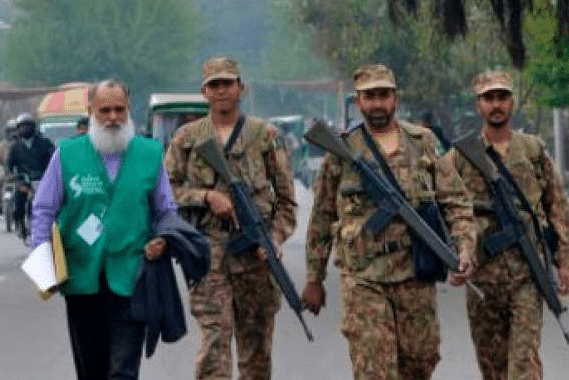Pakistan’s new census, held after nearly two decades, was marred by a series of attacks on census workers.
The provisional results of Pakistan’s new census, held after nearly two decades, are now public. Pakistan’s total population is 207.7 million, making it the world’s sixth most populous country.
High population growth rate continues
In 1998, Pakistan’s total population was 130 million. During the past 19 years, the average annual population growth rate has been 2.4 percent. This had led to an overall increase of 57 percent since the 1998 census.
The number is also higher than the estimated population of 200 million that was widely used by social scientists, analysts, and even some international organisations.
Successive governments time and again announced that the population growth rate had come down to 1.8 percent, and this was seen as a major success. This claim has been busted by the census results.
Studies have shown that there is a high demand for family planning services but they often don’t reach the people. Clerics are also divided on the issue of family planning and some argue it is against the teachings of Islam. This is problematic because Muslim-majority countries such as Iran and Bangladesh have promoted family planning campaigns, often with the help of clerics. But Pakistan’s targets to reduce the birth rate have not been achieved despite policy commitments.
(Read Alok Bansal’s column on the credibility of the figures here)
Most of Pakistanis still live in rural areas
The census perhaps used an outdated definition of what is ‘urban’. The results show that more than 132 million Pakistanis live in rural areas while 75.5 million people reside in urban centres of the country. Karachi and Lahore have both grown, but critics suggest the increase in population may not reflect the reality on ground.
Punjab’s share in the population has declined
According to the new census results, the majority of the population, i.e. 52.9 percent lives in the Punjab, though its share in overall population has declined during the past two decades. The total population of Punjab now stands at 110 million – 69.6 million live in rural areas and 40.3 million in urban centres.
Interestingly, Punjab shows the lowest annual population growth rate of 2.13 percent among the provinces. Punjab’s lower share in the population will impact its seats in the national assembly as well as the share of resources that are allocated under Pakistan’s constitution. For years, the smaller provinces have complained about Punjab’s ‘hegemony’ and control over resources. Things are slowly changing.
Khyber Pakhtunkhwa and Balochistan recorded the highest population growth rates
Despite internal conflict and migration from Khyber Pakhtunkhwa (KP), the provincial population has increased from 17.7 million in 1998 to 30.5 million in 2017 making it 14 percent of the national population. The annual population growth rate was 2.89 percent in KP.
Balochistan, the least populated province has also seen its population surge from 6.5 million in 1998, to 12.3 million in 2017. The annual growth rate in Balochistan was recorded at 3.37 percent.
Only detailed data will provide insight into why the population in KP surged despite the ongoing conflict and migration.
Majority of Sindhis live in urban areas
Sindh’s total population, according to the new census, is 47.8 million. And 52 percent or 24.9 million of people in the Sindh province now lives in urban centers, while 48 percent or 22.9 million is rural population. Sindh’s annual growth rate was recorded at 2.41 percent.
The data on the urbanisation of Sindh is intriguing. It was widely believed that Punjab is the most urban province of Pakistan. However, Sindh now takes the lead as per the new census data. A reason for this could be the waves of migrants from KP to Karachi due to the Taliban insurgency.
The capital’s population more than doubled
The population of Islamabad, Pakistan’s capital, more than doubled during the past two decades. The current population of Islamabad stands at more than 2 million, with over 1 million living in rural areas of the capital, while 900,000 people were living in urban localities.
Census authorities counted Islamabad’s growing suburban population as rural population, which is misleading. Huge suburban developments are now part of the capital city’s political and economic ecosystem.
The federal capital recorded the highest population growth at 4.91 percent. Islamabad offers the best infrastructure and job opportunities for professionals. Also, migration from other conflict-ridden areas has been consistent.
More men than women
While the number of women has increased by 1 percent during the last 19 years, there are fewer women than men in the country. The total number of women stood at 101.3 million (48.8 percent) and the male population was 106 million(51.2 percent).
This could be due to a variety of factors. Sex selection before a child’s birth, women’s health, and maternal mortality might be some of the reasons. Social scientists and planners will have to investigate the reasons for this disparity.
Transgenders were counted
For the first time in the country’s history, Pakistan’s national census also recorded the transgender population. It stands at 10,418 persons. Many observers have pointed out that this seems to be an underrepresented figure.
The author is Editor, Daily Times, visiting faculty at Cornell University and Ithaca College. Twitter: @razarumi






